DENMARK
Copenhagen

Copenhagen
Copenhagen
Copenhagen has been the capital of Scandinavian Denmark for over 400 years. Today, the city is still the country's economic and cultural center. The Danish city is best known for its brightly colored wooden houses and the canals that run through the city. Most buildings are low, only a few church towers protrude above the city. Copenhagen is located by the sea and has a long coastline. This makes the city even more attractive. In addition, the city has the largest airport in all of Scandinavia; Copenhagen Airport.
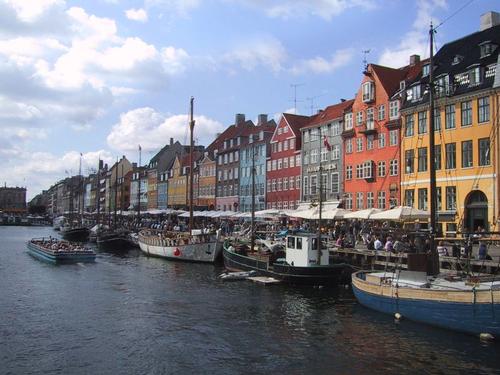 Nyhavn CopenhagenPhoto: Stern CC 3.0 Unported no changes made
Nyhavn CopenhagenPhoto: Stern CC 3.0 Unported no changes made
| advertisement |
| Hotels Copenhagen |
Location
Copenhagen is located on the Danish island of Amager on the Sont strait. The city is located on the east coast of the island of Zealand. Since 2000, Copenhagen has been connected to the Swedish city of Malmö via the Oresund Bridge, which is nearly 8 kilometers long. The city has an area of 88 square kilometers and around 520,000 inhabitants.
Weather
Copenhagen is surrounded by the sea, so it will come as no surprise to anyone that there is a cool maritime climate. This results in cool weather in Copenhagen with year-round rainfall. In the summer months of July and August the mercury can still rise above 20 °C. Below you will find the average temperatures in Copenhagen by month.
Copenhagen weather January: -1 °C
Copenhagen Weather February: 0.5 °C
Copenhagen weather in March: 2.5 °C
Copenhagen Weather April: 6.5 °C
Copenhagen weather in May: 11.5 °C
Copenhagen weather in June: 15.5 °C
Copenhagen weather in July: 17.5 °C
Copenhagen weather in August: 17 °C
Copenhagen weather in September: 13.5 °C
Copenhagen weather in October: 10 °C
Copenhagen weather in November: 5.5 °C
Copenhagen weather in December: 2 °C
History
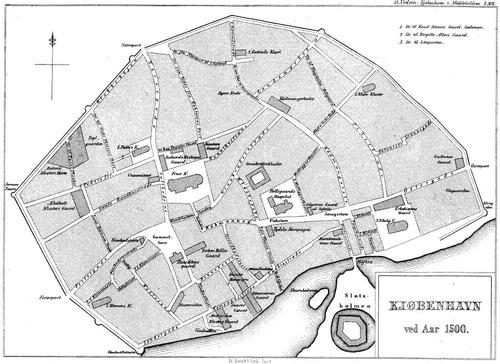 Copenhagen around 1500Photo:Public Domain
Copenhagen around 1500Photo:Public Domain
Copenhagen was founded between 1160 and 1167 by the Bishop Absalon. The name Copenhagen comes from the Danish word "Købmandshavn" which means merchant harbor. The Danish city has been given this name because when Copenhagen was founded in the Middle Ages, Copenhagen had a trading function due to its location on the harbor. Nowadays the port no longer has a primary trade purpose, but is mainly used for recreation. In fact, it has become the most popular cruise destination in the world.
Copenhagen beautification did not begin until the early 17th century under the Danish King Christian IV. A huge fan of the European Renaissance, he undertook a massive construction project to transform the city into one of Europe's leading capitals.
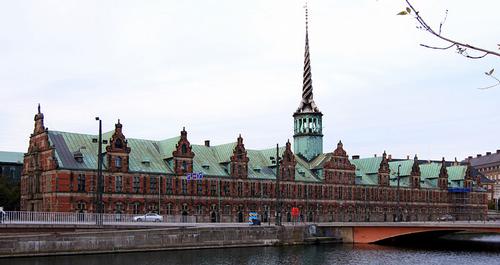 Copenhagen Old Stock ExchangePhoto: Mahlum in the public domain
Copenhagen Old Stock ExchangePhoto: Mahlum in the public domain
The construction included two brand new castles and numerous grand buildings that still exist today, such as Europe's earliest stock exchange, the Borsen. In the 18th century, Copenhagen also faced adversity, there was a major outbreak of the bubonic plague and several major fires.
In the early 19th century, Copenhagen suffered from British attacks led by Admiral Nelson. During the second battle of Copenhagen, British troops fired phosphorus bombs at the city center, killing thousands of residents in this way. Historians often consider this to be the first case of terrorism in Europe.
In the late 19th and early 20th century, the city expanded and the population increased sharply. Copenhagen emerged unscathed from the German occupation during the Second World War. Today Copenhagen is one of the world's most progressive and open cities.
Sights
The most famous resident of Copenhagen was Hans Christian Andersen (1805-1875) who wrote many fairy tales during his lifetime, such as "The Matchstick Girl" and "The Little Mermaid". In addition to fairy tales, he also wrote novels and dramas. At the harbor you can find a bronze statue of a mermaid as a memorial to the writer. It is a small, beautifully finished statue set on a smooth stone in the harbor.
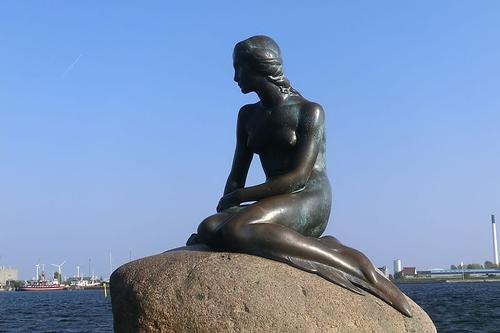 Copenhagen Little MermaidPhoto: Jose Antonio CC 4.0 no changes made
Copenhagen Little MermaidPhoto: Jose Antonio CC 4.0 no changes made
Copenhagen has many beautiful monumental buildings, at least one of which you should visit during a holiday or city trip Copenhagen. For example, go to the ancient sea fortresses Flakfortet, Middelgrundsfortet and Trekroner. Many of Copenhagen's historic buildings have been restored with great care in recent years.
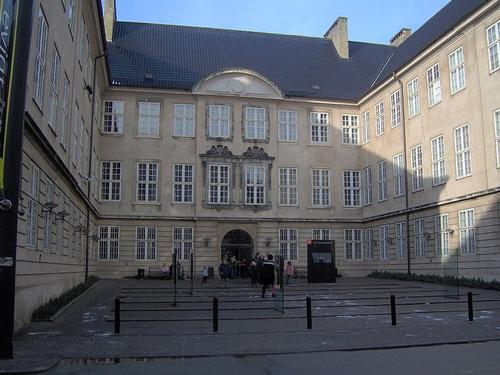 National Museum CopenhagenPhoto: Jinny in the public domain
National Museum CopenhagenPhoto: Jinny in the public domain
The National Museum Copenhagen is one of Europe's oldest museums and is more than 200 years old. Here you can discover themed areas such as Prehistoric Denmark, the Middle Ages and also the famous Viking Age. In the area, the Copenhagen City Museum is also of interest and you will see everything you would like to know about the history of the city.
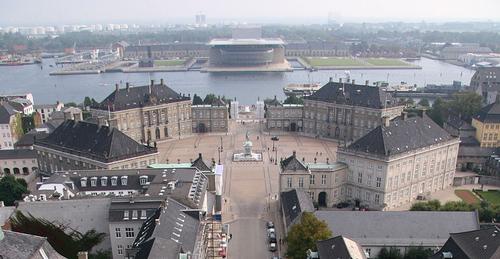
Amalienborg CopenhagenPhoto: Paracel63 CC 3.0 Unported no changes made
Amalienborg Palace is also an important landmark in Copenhagen. This castle is the winter residence of the Danish Crown Prince and his wife. The complex dates back to the mid-18th century and consists of four separate palaces (Brockdorfske, Levetzaus, Moltkes and Schackske) arranged around a square.
Tips
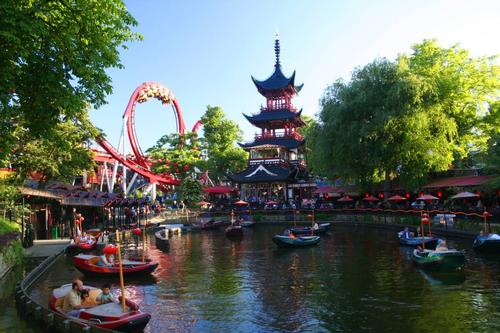 Tivoli CopenhagenPhoto: Malte Hübner in the public domain
Tivoli CopenhagenPhoto: Malte Hübner in the public domain
A fun day out in Copenhagen is a trip to the Tivoli amusement park. This park is world famous because it has existed since 1843. The amusement park is located in the middle of Copenhagen at the Rádhuspladsen. There is a wooden roller coaster from 1914 that is still in use. Every year the park attracts millions of tourists, who especially enjoy the phenomenal lighting in the park at night.
You only really discover Copenhagen when you take a boat through the canals of the old center. The boats leave from Nyhavn. This cozy harbor is also fun to visit. You will find many cozy terraces and colored houses.
If you want to go shopping for a day, Strøget is the place to be. This is the longest pedestrian zone in the world. You will find expensive brands such as Chanel and Prada, but also cheaper chains such as H&M. Street artists here show their skills among the shoppers. So versatility certainly applies to Copenhagen.
Useful links Copenhagen
BBC Country ProfilesWorld Fact Book Explore all Countries
How to call
Last updated June 2025
Copyright: Team - The World of Info